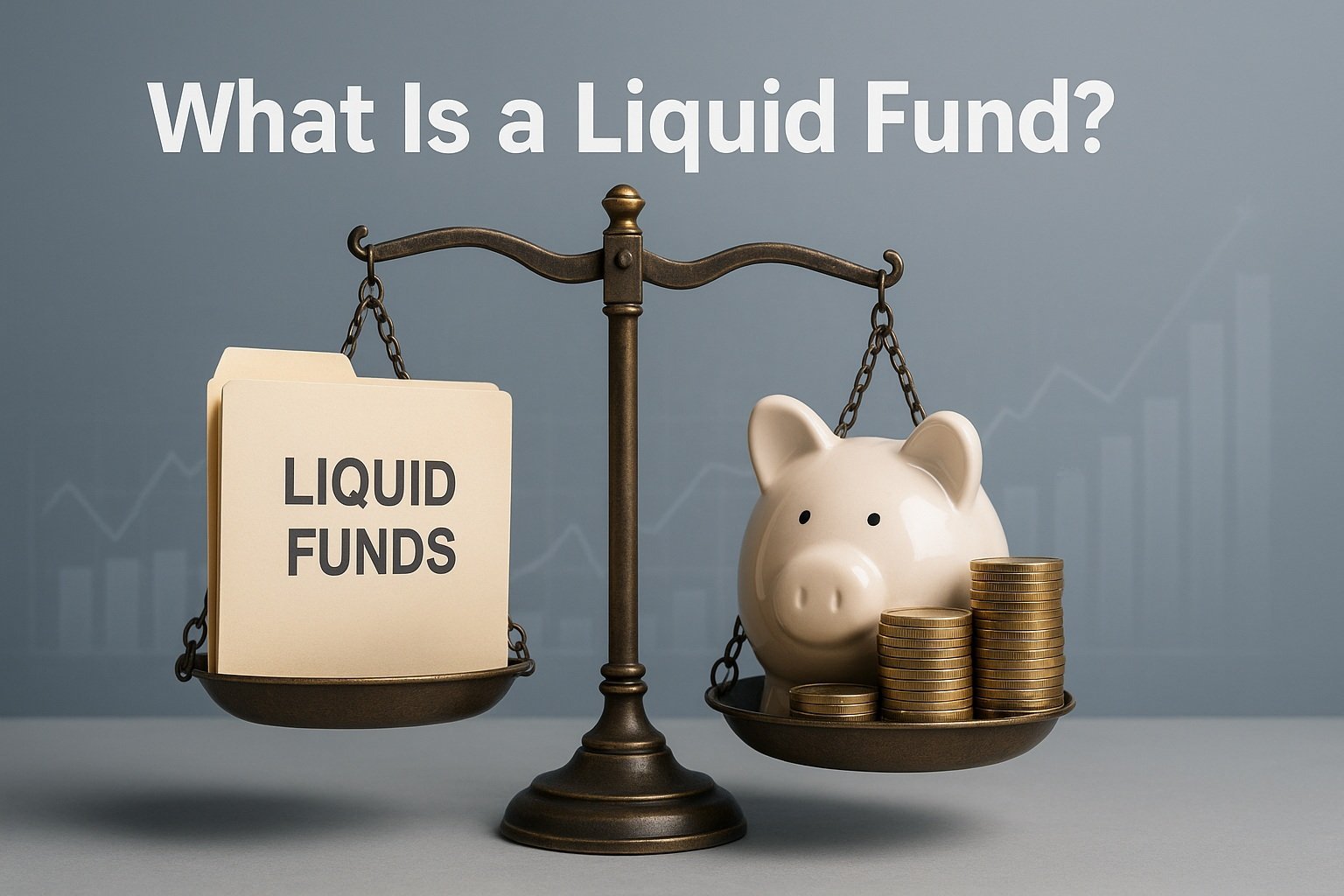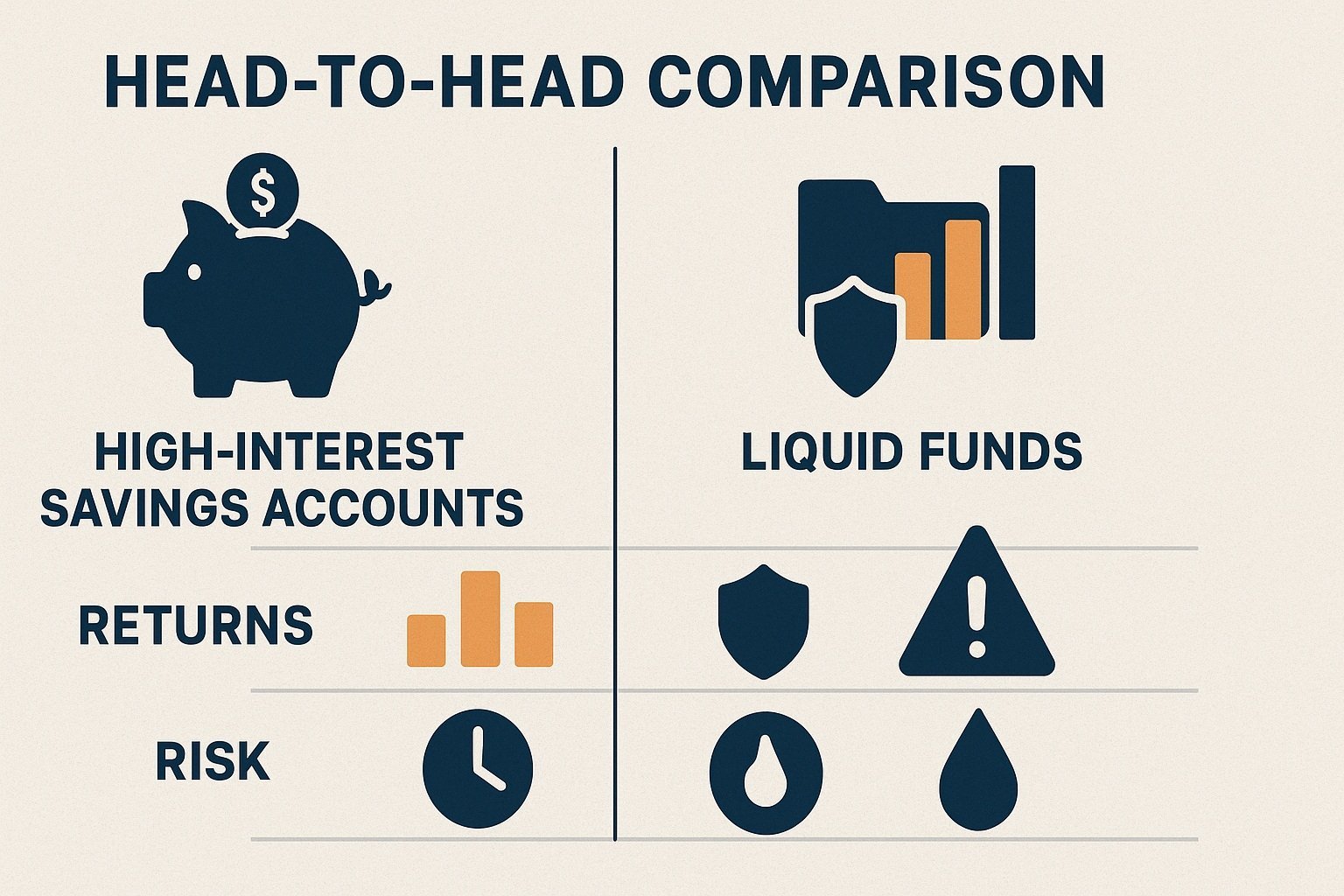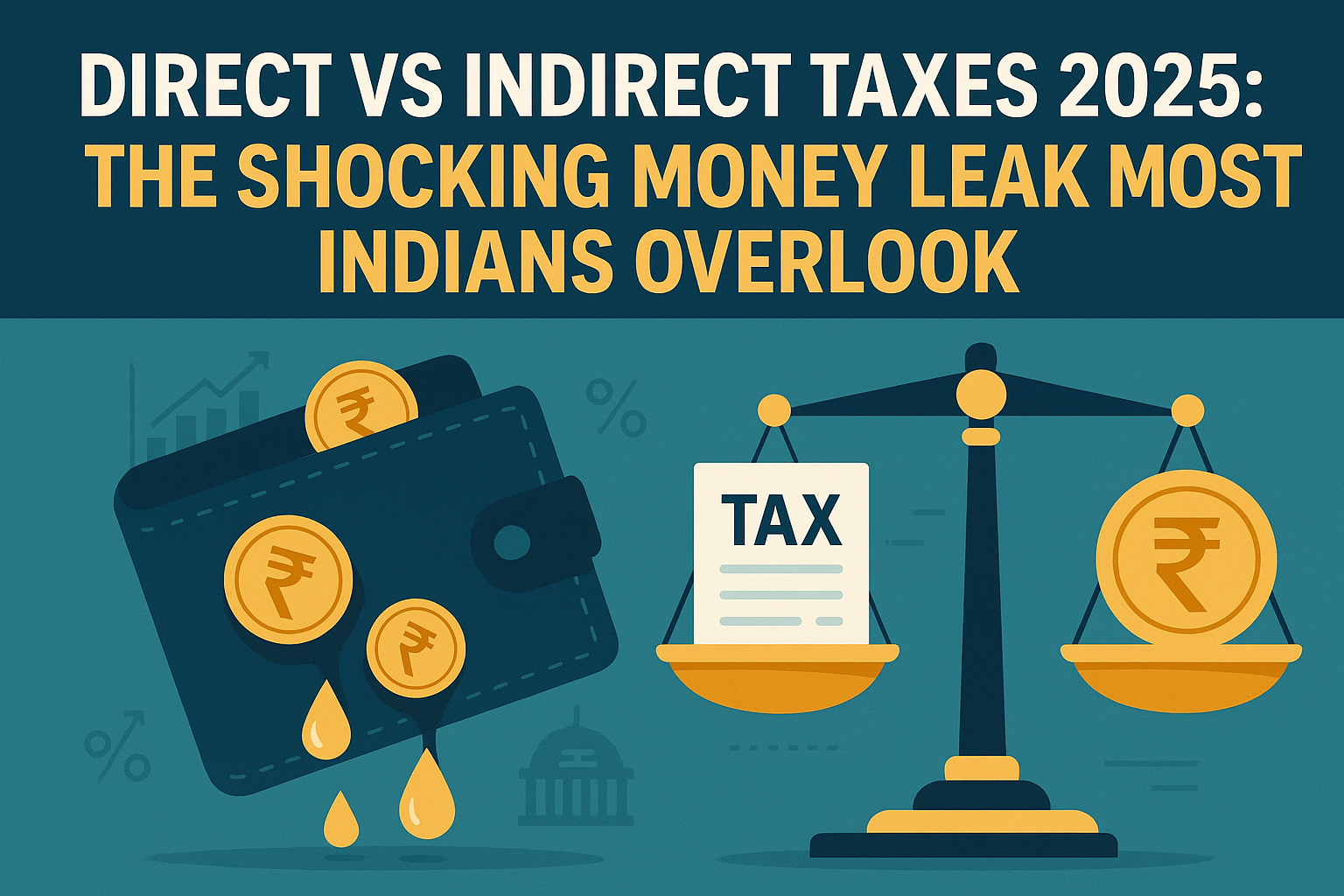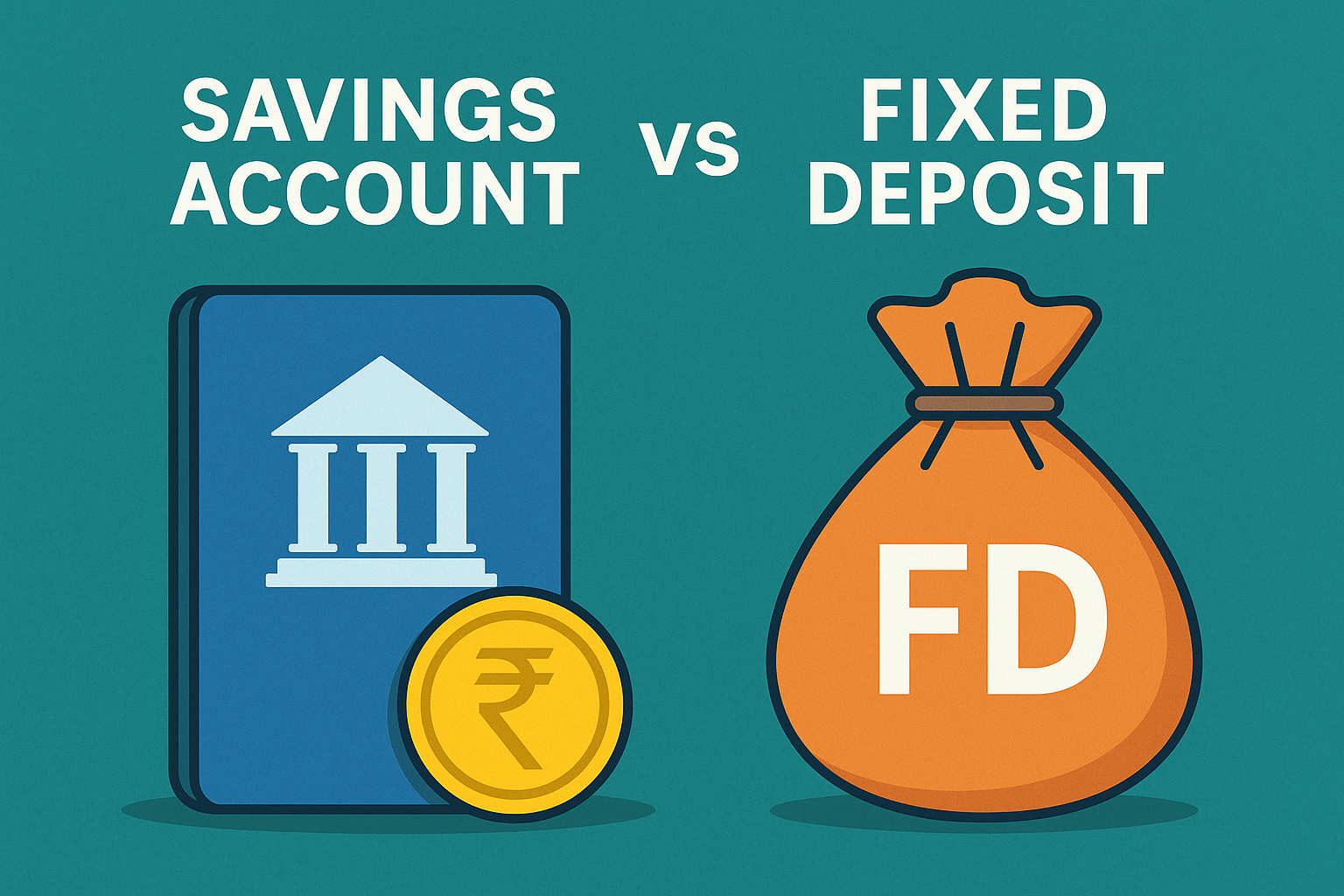
High-Interest Savings Account vs Liquid Fund: Park Short-Term Cash for Maximum Safety + Return
Imagine your wallet as a little engine humming away. You wouldn’t let it idle at 3 or 4 per percent when 6 or 7 per cent is on the table, right? High-interest savings accounts and liquid funds both promise to make every rupee of your short-term stash work harder. One is a bank deposit insured up to ₹5 lakh, and the other is a money-market mutual fund holding ultra-short-term debt. By the end of this article, you’ll have a clear picture of how a high-interest savings account works, who offers them, and what rates, fees, and taxes to expect in 2025.
What Is a High-Interest Savings Account?

A high-interest savings account is just like your regular savings account, only turbocharged. Instead of the typical 3 or 4 per percent interest you’ve grown used to, these accounts offer rates in the 6 to 7 per cent range, helping your emergency fund or idle cash grow faster without locking it away.
How They Work & Who Offers Them
When you deposit money in a high-interest savings account, the bank pays you interest—usually calculated daily and credited monthly—just as with standard savings accounts. What sets them apart is the rate, which is typically variable, so it may rise or fall in line with policy rates set by the Reserve Bank of India. Most major private banks and a growing number of small finance banks now offer these accounts, with minimal balance requirements and easy online access.
Current Rates, Fees & Taxation (2025 snapshot)
Here’s a quick snapshot of typical terms you’ll find in 2025 for high-interest savings accounts.
| Provider type | Interest rate range p.a. | Minimum balance | Monthly maintenance fee | Tax treatment |
|---|---|---|---|---|
| Private banks | 6.00 % – 6.75 % | ₹10,000 | Waived if min balance met | Interest added to your taxable income; TDS above ₹40,000 per year |
| Small finance banks | 6.50 % – 7.00 % | ₹2,000 | ₹100 if balance falls below threshold | Same as above |
| Digital-only challengers | 6.25 % – 6.90 % | None | No fee | Interest added to taxable income; TDS rules apply |
Most banks calculate interest on your daily closing balance and credit it monthly. If your annual interest exceeds ₹40,000 (₹50,000 for senior citizens), the bank will deduct TDS at 10 %, unless you furnish Form 15G or 15H. Even though the headline rate looks attractive, remember that taxes can eat into your gains, so factor in your marginal tax rate when comparing real returns.
What Is a Liquid Fund?
Liquid funds are a type of money-market mutual fund designed to park cash you might need at short notice. Instead of sticking your money in a bank, you’re investing in a diversified pool of ultra-short-term debt instruments—think treasury bills, commercial paper and certificates of deposit—with maturities usually under 91 days. Because the underlying holdings roll over so quickly, liquid funds aim to keep your principal safe while delivering modest returns that often outpace a traditional savings account.

Portfolio Makeup, Risk Profile & Regulation
At their core, liquid funds spread your money across a mix of high-quality, short-tenure debt securities issued by governments, public sector undertakings and top-rated corporations. This diversification helps cushion the impact if one issuer hits a rough patch. Here’s how they typically stack up:
-
Portfolio composition
-
Treasury bills and government securities: up to 20 cent
-
Commercial paper and certificate of deposit: up to 80 cent
-
Reverse repo agreements for ultra-liquidity
-
-
Risk profile
-
Low credit risk: most holdings are rated AA or higher
-
Low interest-rate risk: short maturities mean price swings are minimal
-
Credit concentration limits enforced by regulators to avoid over-exposure to any single issuer
-
-
Regulation
-
Governed by SEBI’s mutual fund rules, which cap individual instrument maturity at 91 days
-
Daily mark-to-market valuation ensures net asset value (NAV) reflects current market conditions
-
Mandatory liquidity buffer: funds must hold at least 15 cent of assets in instruments maturing within one day to meet redemptions without penalty
-
Because of these safeguards, you can typically redeem your investment on the same business day or the next, making liquid funds a go-to option for parking your emergency fund or cash earmarked for a purchase in the next few weeks.
Typical 7-Day, 30-Day & 1-Year Returns
While past performance does not guarantee future results, liquid funds in India have historically delivered returns that track short-term interest rates closely. Here’s a snapshot of average rolling returns across the category as of mid-2025:
| Time horizon | Average rolling return p.a. |
|---|---|
| 7-day yield | 6.50 cent |
| 30-day yield | 6.70 cent |
| 1-year return | 7.10 cent |
These numbers reflect the fund’s ability to capture prevailing money-market rates—typically a notch above standard savings rates—while maintaining high liquidity and low volatility. When comparing with a high-interest savings account, remember that liquid fund NAVs fluctuate slightly, so your actual rupee-in, rupee-out amount can vary by a few paise, especially over very short holding periods.
Head-to-Head Comparison: Returns | Risk | Liquidity
Let’s line up a high-interest savings account against a liquid fund on the three metrics that matter most when parking short-term cash: real returns after tax and inflation, principal protection, and ease of access.

Net Return After Tax & Inflation
High-interest savings accounts pay around 6.0 %–7.0 % per annum, but you pay tax at your marginal rate and face roughly 5 % inflation. After a 30 % tax hit and a 5 % cost-of-living adjustment, your real return hovers near 1.0 %–1.5 % per annum.
Liquid funds typically deliver 6.5 %–7.1 % annualized returns. Because short-term debt gains under three years are taxed at your slab rate, you see a similar tax drag. After applying a 30 % tax rate and adjusting for 5 % inflation, your net real return lands closer to 1.5 %–1.8 % per annum.
Capital-Protection Score (credit & interest-rate risk)
-
High-interest savings account
-
Principal insured up to ₹5 lakh by the Deposit Insurance and Credit Guarantee Corporation
-
No interest-rate sensitivity: your rate may change, but your ₹1 stays ₹1
-
-
Liquid fund
-
Holds ultra-short debt rated AA or higher, with a mandatory liquidity buffer
-
Small mark-to-market fluctuations if rates move, plus mild credit risk
-
On a scale of 1 to 10 (10 being absolute safety), savings accounts score about 9.5, while liquid funds rate around 8.5.
Access Speed: Instant Sweep vs T+1 Redemption
-
High-interest savings account
-
Instant access via online transfer, ATM withdrawal or auto-sweep to your checking account
-
No waiting period when you need funds
-
-
Liquid fund
-
Redemption proceeds credited by T+1 (next business day)
-
Some fund houses even process same-day if you submit early, but T+1 is the norm
-
| Metric | High-Interest Savings Account | Liquid Fund |
|---|---|---|
| Net real return after tax & inflation | ~1.0 %–1.5 % p.a. | ~1.5 %–1.8 % p.a. |
| Capital-protection score | 9.5 / 10 | 8.5 / 10 |
| Access speed | Instant via sweep or transfer | T+1 business day redemption |
This side-by-side view shows that if your top priority is absolute safety and immediate access, a high-interest savings account wins. If you can accept a small principal fluctuation for a slightly higher real return, a liquid fund may be the better home for short-term cash.
Decision Framework: Where Should Your Cash Sit?
When you’ve narrowed your choices to a high-interest savings account or a liquid fund, use this simple framework to map each rupee of short-term cash to its ideal home.
3-Question Fit Test (goal horizon, tolerance, tax bracket)
-
What’s your goal horizon?
-
Under 7 days: Go with a savings account—instant access is key.
-
7–30 days: Liquid funds deliver slightly higher yield with minimal volatility.
-
1–12 months: You can lean into liquid funds, but if you might need cash in a pinch, stick with savings.
-
-
How much principal wiggle room do you have?
-
Zero tolerance: If even a few rupees of NAV fluctuation makes you uneasy, choose a bank account insured up to ₹5 lakh.
-
Small buffer: Willing to accept tiny ups and downs for an extra 0.2–0.3 percent? A liquid fund fits.
-
-
What’s your tax bracket?
-
High bracket (30 percent+): The marginal benefit of liquid funds shrinks once taxed, so the simplicity of a savings account can win.
-
Lower bracket (below 20 percent): You keep more of that extra fund yield, making liquid funds more attractive.
-
Rule-of-Thumb Allocation for Emergency vs Opportunity Funds
Use this split to keep your core safety net separate from cash earmarked for short-term opportunities:
| Fund type | Purpose | Recommended allocation |
|---|---|---|
| Emergency fund | Cover 3–6 months of essential expenses | 100 percent in high-interest savings |
| Opportunity fund | Cash for planned purchases or market plays | 100 percent in liquid funds |
This way, your “rainy day” stash stays rock-solid and instantly available, while any excess cash poised for returns lives in a slightly higher-yielding vehicle.
Step-by-Step Strategy to Maximise Short-Term Cash

When you know which vehicles to use, the hard part is turning that knowledge into action. Follow these three steps to keep your short-term stash humming.
1. Bucket Cash by Time Horizon (0–3 m, 3–12 m, 12 m+)
Sorting your cash into time-based buckets ensures you never tie up money you might need in a pinch, while squeezing out every basis point of yield:
| Time bucket | Recommended vehicle | Why it works |
|---|---|---|
| 0–3 months | High-interest savings account | Instant access whenever emergency strikes |
| 3–12 months | Liquid fund | Slightly higher yield with very low volatility |
| 12+ months | High-interest savings (until redeployed) | Keeps funds safe and ready while you plan next steps |
Treat the first two buckets as your working cash. For anything you truly won’t touch for over a year, you can research longer-term debt products; until then, leave it parked in your high-interest account so it’s safe and still earning.
2. Automate Sweeps & Rate Checks Quarterly
Your best returns come when you let technology do the heavy lifting:
-
Set up auto-sweep
Link your checking and high-interest savings so any idle balance above your desired buffer automatically moves overnight. That way every rupee not spent today earns tomorrow’s higher rate. -
Schedule quarterly rate reviews
Block a recurring calendar reminder every three months. When it pops up, visit your bank’s or fund house’s portal, note the headline rates, and compare them against competitors. If you spot a better offer, rebalance your holdings that same day—no emotional decisions required.
3. Track Post-Tax Yield vs Benchmark Inflation
It’s easy to chase headline rates and forget what really matters: real return in your pocket.
-
Maintain a simple tracker
Create a two-column sheet listing each vehicle alongside its nominal yield and your marginal tax rate. -
Calculate post-tax yield
Subtract your expected tax hit to see what you actually keep. -
Adjust for inflation
Deduct the latest CPI inflation rate (around 5 % in 2025) to reveal your true earnings.
By updating this at least once a quarter, you’ll quickly spot when real returns slide into negative territory—and exactly when it’s time to switch banks or funds.
FAQ — People Also Ask
Which gives higher returns, a liquid fund or a high-interest savings account?
Liquid funds generally edge out savings accounts by about 0.2–0.4 percent before tax. After you factor in your marginal tax rate and inflation, the real difference narrows, but liquid funds tend to deliver slightly higher net returns over time.
Are liquid funds safe for emergency money?
Liquid funds are very low risk, thanks to portfolios of ultra-short-term, high-credit-quality debt and a required liquidity buffer. You will see tiny NAV fluctuations, but for most investors this volatility is negligible. If absolute principal protection is crucial, though, a savings account insured up to ₹5 lakh offers a small extra layer of security.
Is the interest from a high-interest savings account taxable?
Yes. Interest from these accounts is added to your taxable income and taxed at your slab rate. If your annual interest income exceeds ₹40,000 (or ₹50,000 for senior citizens), banks will deduct TDS at 10 percent unless you submit Form 15G or 15H.
Can I lose money in a liquid fund?
Since liquid funds hold very short-dated instruments rated AA or higher, the chance of loss is minimal. However, NAV can fluctuate by a few paise if interest rates move sharply. Over very short periods, this might mean you get slightly less back than you put in, but losses are uncommon and usually tiny.
How fast can I withdraw from a liquid fund?
Standard redemption timelines are T+1, meaning you receive proceeds on the next business day. Some fund houses process same-day redemptions if you submit your request early, but T+1 is the industry norm.
What is the ideal split between savings accounts and liquid funds?
Keep your emergency fund (3–6 months of expenses) 100 percent in a high-interest savings account for instant access and insurance cover. Any cash set aside for planned purchases or market plays can live fully in liquid funds to capture extra yield while retaining quick liquidity.






























